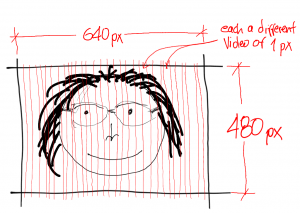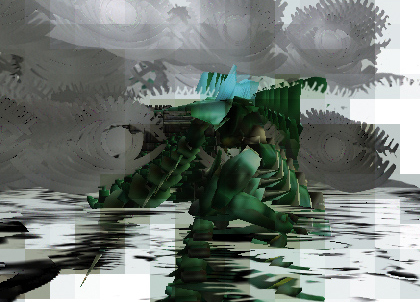02
07/12
22:25
f(you * γ): reflexions after Lübeck
Two weeks ago I presented my (self-)portrait in the general meeting of DAAD scholarship holders in Lübeck. After the presentation several issues generated a vividly discussion. I’ve grouped those issues under two fragmentations: of the frame and of the author. The first, evident in the visual outcome, is the fragmentation of the space within the frame. The second refers to the crowd-sourcing strategy I use for the production of the portrait.
Video is a medium primarily concerned with time. This medium fixates time into a series of independent recordings that we watch in rectangular frames. Almost always the space of the frame is filled with one image that represents one time and one space. Although video fragments time, the visual frame keeps in each recording a unified time and space. The camera can only record a sequential flow of time; it cannot record several, non-sequential moments of time simultaneously. The simultaneous assemblage of different times within the frame occurs always in the montage. In my work this is not different. I record each time one minute of video of myself but in the final composition, a real-time montage, all these recordings are agglomerated and played simultaneously within the same frame. Each recording is cropped to a few pixels width and placed next to another recording. This procedure produces a moving image that is composed by several other moving images. The frame is thus fragmented into several columns and each of these columns is filled with a different video. The fragmentation of time that video generates is carried to the very frame. The manipulation I propose has a spatial character. Such a procedure, I would claim, it is only possible in digital video because the digital allows the complete programming of the image and each pixel is susceptible to manipulation.
This fragmentation is taken to the production too. Each video recording is made by a different person using a camera phone. I’ve established a general set-up to control the visual aspect of the image and each person should comply with it. In this form of production the final outcome is made by the work of a crowd. In my (self-)portrait there are authors and I act as a catalyst for the making of the video portrait. My role as an artist is to create the conditions for the production, nothing remarkably new since all post-industrial production functions in such a way. But this work is about the production of a portrait, something intimate and full with authorship. Expressed mathematically, each column of one pixel in my portrait is a function of one independent variable: you multiplied by a constant: me (γ).
Thus, f(you * γ)


